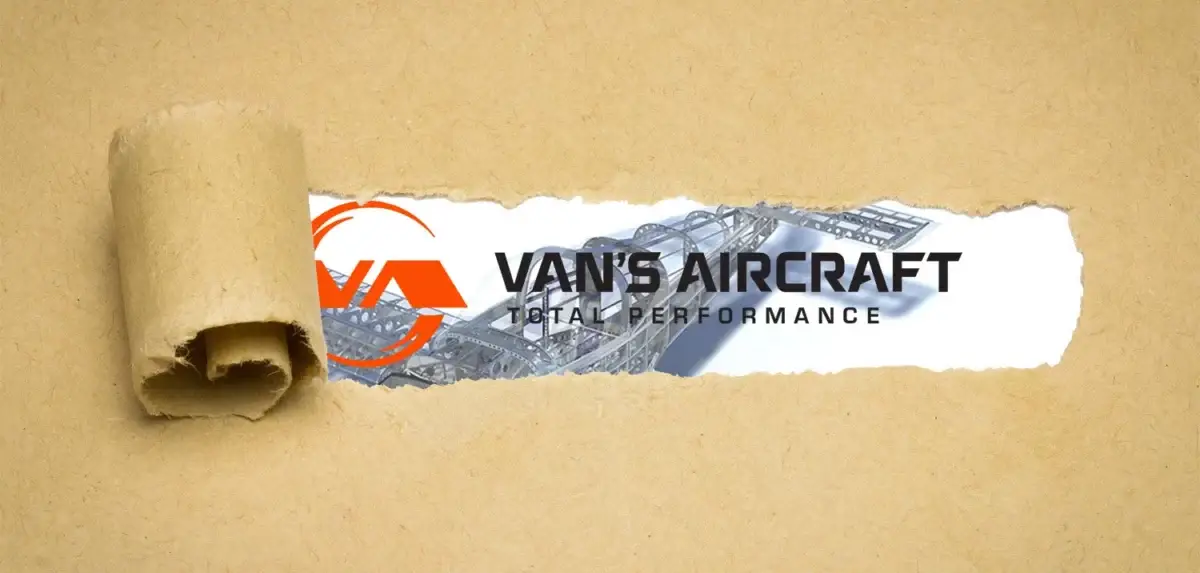
Van’s has struggled with issues including supply chain challenges, faulty primer in quickbuild kits, and defects in laser-cut parts. [Credit: KITPLANES]
Van’s Aircraft filing for Chapter 11 bankruptcy protection this week begs the question: How can the largest and most successful company in the kit-aircraft world find itself in this situation? With more than 11,000 RVs flying and record kit sales over the last three years, it seemed Van’s was set for success.
But countering the success of the company’s designs and their unprecedented popularity were challenges compounded by the COVID pandemic, a failure by a key supplier and missteps of its own. Monday’s Chapter 11 filing gives some clues to the situation Van’s faces that pushed the company into a form of bankruptcy that most often precedes a reorganization and recovery. (Van’s is not liquidating. Chapter 11 is designed to give a company some relief from liabilities and enable a reorganization into a sustainable business.)
In the Chapter 11 declaration is this summary: “Until recently Van’s operated successfully without bank loans or other lines of credit, relying on customer deposits and earnings for its working capital.” But then Van’s faced “a combination of unforeseen, significant events occurring over a relatively short period of time increased Debtor’s [Van’s Aircraft’s] costs, doubled its normal inventory levels, slowed deliveries, and strained Debtor’s cash flow to the breaking point.” Support from founder Dick VanGrunsven since September has kept the company afloat.
One could argue that Van’s trouble started with an issue regarding quickbuild kits. The offshore constructor failed to adequately corrosion-proof parts of the assembly, which led Van’s to a time-consuming side project to understand the nature of the problem and its scope, and construct a remedy. The issue is described in the declaration as a “multi-million-dollar setback” for Van’s. Moreover, it contributed to a growing backlog in ordered kits and extended delivery times for customers.
At the same time, there was unprecedented demand for kits during the early stages of COVID. (In fact, the entire homebuilt industry witnessed a surge in popularity, with all major kit manufacturers reporting greatly increased sales in 2020 and 2021.) For Van’s, kit sales rose from 1594 during 2019 (already a very good number for the company) to 2508 in 2020 and 3982 in 2021. According to the filing, revenue actually decreased from $31.5 million in 2019 to $31.1 million in 2020, despite a 1000-unit increase in orders. Van’s didn’t get the bulk of the kit payment until shipment. In 2021, however, the big increases in order began to show up in revenue, increasing to $37.6 million in 2021 and $52.6 million in 2022. Net income, as described in the declaration, was $2.6 million in 2019, $3 million in 2020, but dropped to $2.1 million in 2021 as investments to increase capacity began to appear in the financials. In 2022, Van’s net income turned red, with a loss of $3.3 million; it lost $1 million through the end of August this year against revenues of $43 million.
It’s important to understand that Van’s was already operating at or near capacity in 2019. Along with technical changes to the kits over time that placed more work at the factory (steps the builder would not have to perform, an expectation in the modern kit-aircraft world), Van’s found itself with greatly increased demand and set about finding ways to meet it.
Because the vast majority of the company’s kit parts are known as “pre-punched” parts and the machines that do the punching formed the production roadblock, Van’s looked for ways to increase capacity by outsourcing some of this step. One way was to have the parts normally punched instead have their holes cut by a laser. This is a common method for automating manufacture of sheet metal parts, along with CNC routers, punches and water-jet cutting. In fact, Van’s had been using laser cutting for some parts and then elected to laser-cut more of them.
Builders began to notice that some laser-cut parts would crack during the dimpling process—where the metal is formed for the purpose of installing flush rivets—and that eventually started Van’s engineering department down the path of discovering why this was happening. Many builders felt that Van’s was slow to acknowledge the problem and that by the time it did, there was a significant quantity of laser-cut parts out in the world. Van’s turned its full attention to the problem and identified the parts in question—more recently, they were able to far more accurately predict which specific airplane kits were likely to have the suspect parts. Latest estimates are that some 1800 kits are affected.
These issues would challenge many companies but they were compounded by other events, as the declaration shows. “Van’s order file doubled in the 2020 and 2021 period. At the same time, supply chain issues, and supplier shutdowns slowed productions of key components, increasing back orders and delaying order completions, requiring Debtor to hire and train more staff. Wages increased, and shipping costs rose more than four-fold during this period. Stated simply, without realizing it, Debtor was selling a high volume of aircraft kits below its cost. The combination of all these factors overstressed Van’s workforce, operating support systems and management skills resulting in a series of one-off but very costly errors.” The declaration also notes that, “Some of its senior employees with deep familiarity with both office and manufacturing process workings chose to retire during COVID.”
The picture painted is of a company overwhelmed by overlapping challenges, started by the primer issue with quickbuild kits and followed closely by a global pandemic that simultaneously cut into its manufacturing capacity, dramatically increased costs and, perhaps ironically, also greatly boosted demand. That in the effort to catch up with demand the company also lost track of internal costs and failed to increase kit prices (as one remedy) is one inescapable takeaway from the factual descriptions in the Chapter 11 declaration—and a good indication of the remedies needed to define its path forward.
Editor's Note: This article first appeared on KITPLANES.

Subscribe to Our Newsletter
Get the latest FLYING stories delivered directly to your inbox





